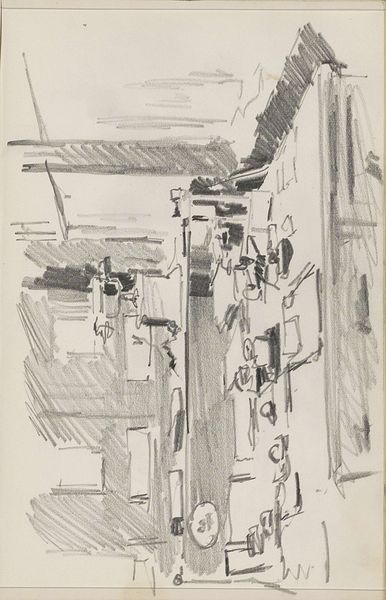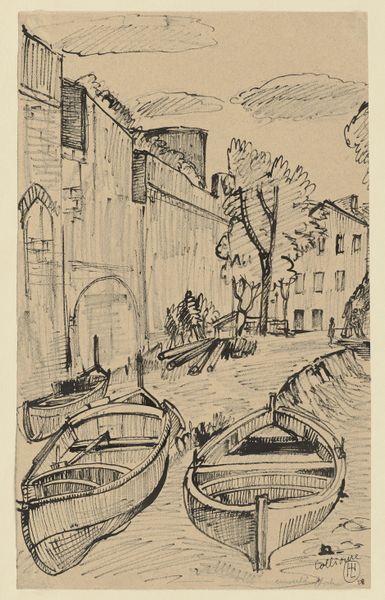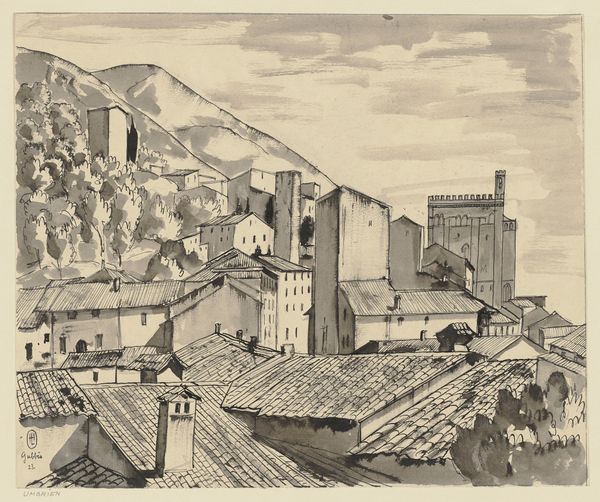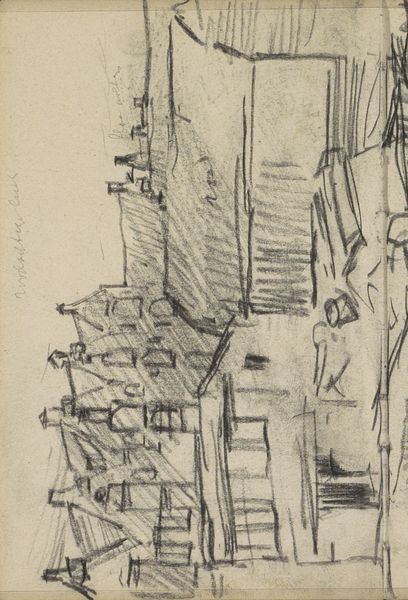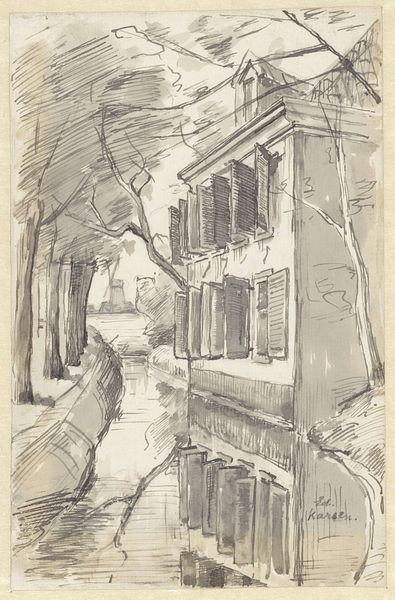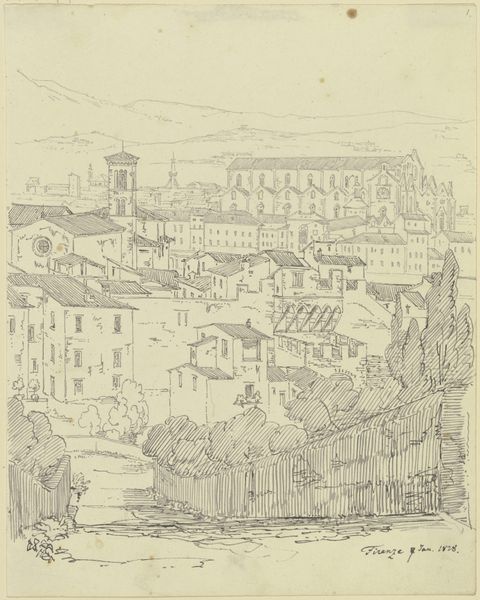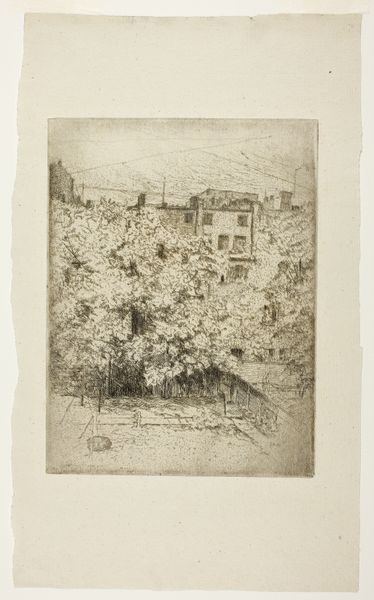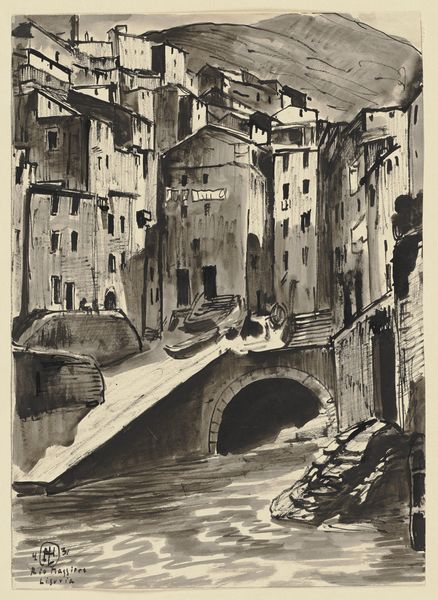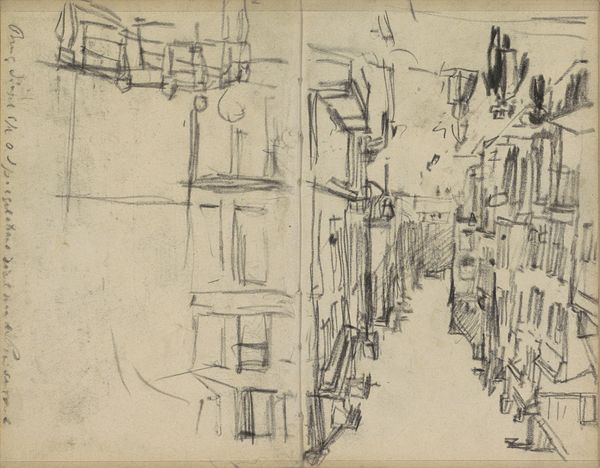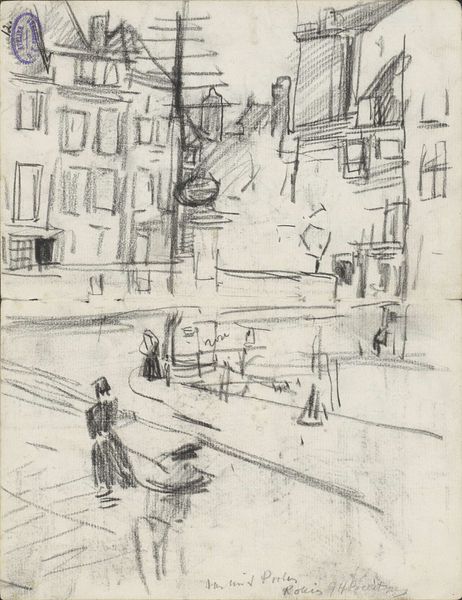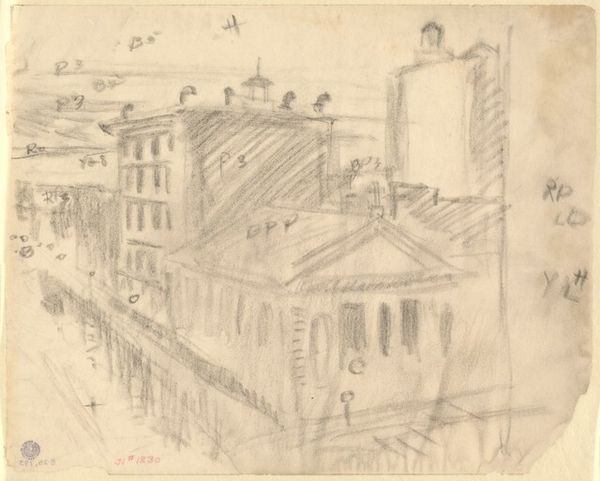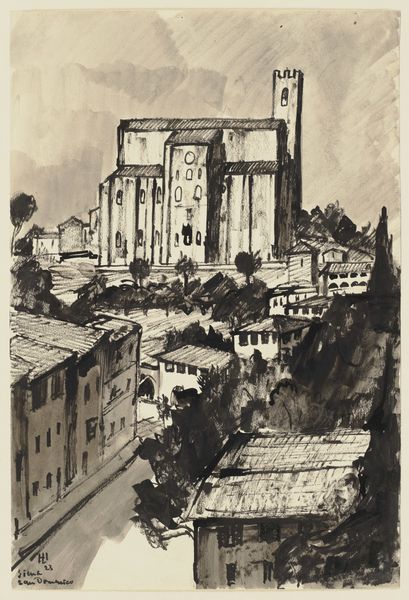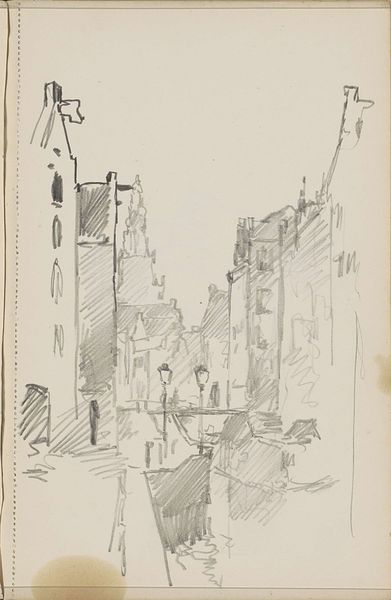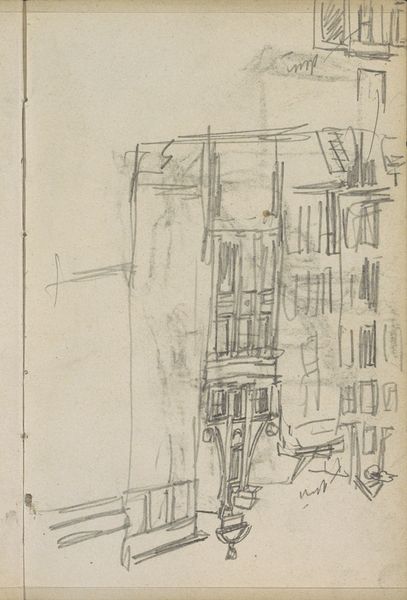
drawing, paper, ink
#
drawing
#
paper
#
ink
#
cityscape
#
modernism
#
realism
Copyright: Public Domain
Curator: This ink drawing, "View of Genoa," was created by Hermann Lismann in 1931 and is currently housed at the Städel Museum. It offers an interesting example of modernist urban landscapes. Editor: The high-contrast monochrome lends it an almost dreamlike quality. It makes me think of old photographs, evoking nostalgia. The way the buildings crowd the hill—it seems to suggest density but also perhaps, human potential. Curator: Right, Lismann worked during a period of rapid urban expansion and industrial growth. Cityscapes like these captured not just the architectural forms, but the evolving social fabric of European life. Editor: You can see the symbolism in the clustered houses going up the hills. Perhaps there's something being expressed about community versus individuality. All those houses, all alike. Does the urban dweller lose self? The modern man? The towering structures seem to emphasize our own impermanence. Curator: I think that ties into broader Modernist themes. Disillusionment, the search for meaning in a rapidly changing world... the influence of industrialization and shifting social hierarchies all shaped the cultural context for artists like Lismann. This piece provides a critical commentary. Editor: The absence of people is certainly significant. It adds a layer of melancholy and mystery. I am also thinking that perhaps there is commentary on rising industrial powers as well. An absence of life almost looming over nature, the trees which seems more active, vibrant and free, contrasting so drastically from the houses. Curator: It certainly could be interpreted in many ways. It prompts us to question the trajectory of urban progress and consider the balance between built environments and the natural world. Editor: I agree. It's a thought-provoking representation, not just of a city, but also of the social, and psychological landscape of its time. I'm certain there is deep contemplation in the usage of realism too. Curator: Ultimately, a study of "View of Genoa" can reveal complex historical threads from the early 20th century. It serves to illustrate our own time as well, in the themes it expresses. Editor: A strong interplay between aesthetics and cultural analysis. Very telling about the symbolism and anxieties within European experience.
Comments
No comments
Be the first to comment and join the conversation on the ultimate creative platform.
